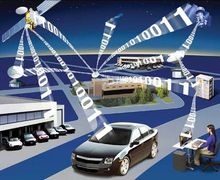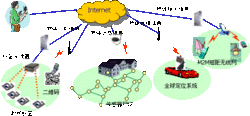Internet of Things

Internet of things is a new generation of information technology is an important part of the "information" era of an important stage of development. Internet of things is connected to the Internet. There are two layers of meaning: First, the core and foundation of things is still the Internet, is based on the Internet extension and expansion of the network; Second, its client extension and extended to any items and items, information Exchange and communication, that is, things together. Internet of things through the intelligent perception, identification technology and pervasive computing communication awareness technology, widely used in the integration of the network, and therefore known as the computer, the Internet after the world's third wave of information industry development. Internet of things is the application of the Internet to expand, rather than the Internet of things is the network, it is better to say that things are business and applications. Therefore, the application of innovation is the core of the development of things to the user experience as the core of innovation 2.0 is the soul of the development of things.
Internet of Things Definition
Initially introduced in 1999: that is, through radio frequency identification (RFID) (RFID + Internet), infrared sensors, global positioning system, laser scanner, gas sensors and other information sensing equipment, according to the agreement, any items connected with the Internet To carry out information exchange and communication, in order to achieve intelligent identification, positioning, tracking, monitoring and management of a network. In short, the Internet of Things is "the Internet connected to the matter."
China Internet of Things Association of enterprises is defined as the current almost all technology and computer, Internet technology, to achieve between objects and objects: the environment and status information real-time real-time sharing and intelligent collection, delivery, processing, implementation The Broadly speaking, the current information technology related to the application, can be included in the category of things.
In its famous model of scientific and technological fusion, it is proposed that the Internet of Things is the technology concept and application closest to the top of the model. Internet of things is based on the Internet, the traditional telecommunications network and other information carrier, so that all can be individually addressed by ordinary physical objects to achieve interoperability of the network. It has: intelligence, advanced, interconnected three important features.
International Telecommunication Union issued the ITU Internet report, the Internet of Things made the following definition: through two-dimensional code reading equipment, radio frequency identification devices, infrared sensors, GPS and laser scanner and other information sensing equipment, according to the agreement , A network of any items connected to the Internet, information exchange and communication, in order to achieve intelligent identification, positioning, tracking, monitoring and management.
According to the definition of the International Telecommunication Union, the Internet of Things mainly addresses the interconnection between Thing to Thing, T2T, Human to Thing, H2T, Human to Human, H2H. But unlike traditional Internet, H2T refers to the connection between a generic device and an item, which makes the connection of objects more simplified, and H2H refers to the interconnection between people without a PC. Because the Internet does not take into account the problem of connecting any items, so we use the Internet of things to solve this traditional sense of the problem. Internet of Things as the name suggests is to connect the goods network, many scholars discuss the Internet of things, often introduced a concept of M2M, can be interpreted as Man to Man, Man to Machine, machine to the machine in essence, in people and machines, The interaction with the machine is mostly to achieve the information exchange between people.
Internet of things refers to a variety of information sensing equipment, real-time collection of any need to monitor, connect, interactive objects or processes and other needs of information, combined with the Internet to form a huge network. Its purpose is to achieve objects and objects, objects and people, all the items and the network connection, easy to identify, manage and control. Its industrial scale in 2011 more than 260 billion yuan. The support layer, the perception layer, the transport layer, the platform layer and the application layer of the five layers of the Internet of Things are 2.7%, 22.0%, 33.1%, 37.5% and 4.7% of the Internet. The Internet of things sensing layer, the transport layer to participate in many manufacturers, become the industry's most competitive areas.
Industrial distribution, the domestic Internet of Things industry has initially formed the Bohai Sea, the Yangtze River Delta, the Pearl River Delta, as well as the central and western regions and other four regional agglomeration development of the overall industrial space pattern. Among them, the industrial area of the Yangtze River Delta region ranked first in the four regions.
At the same time, the proposition of the Internet of Things laid the foundation for the construction of the national wisdom city, and realized the interconnection and sharing of the wisdom city. The comparative study of the "Internet of Things network architecture and the realization method" published in the journal "Journal of Computer Science" The implementation method is analyzed and introduced.





